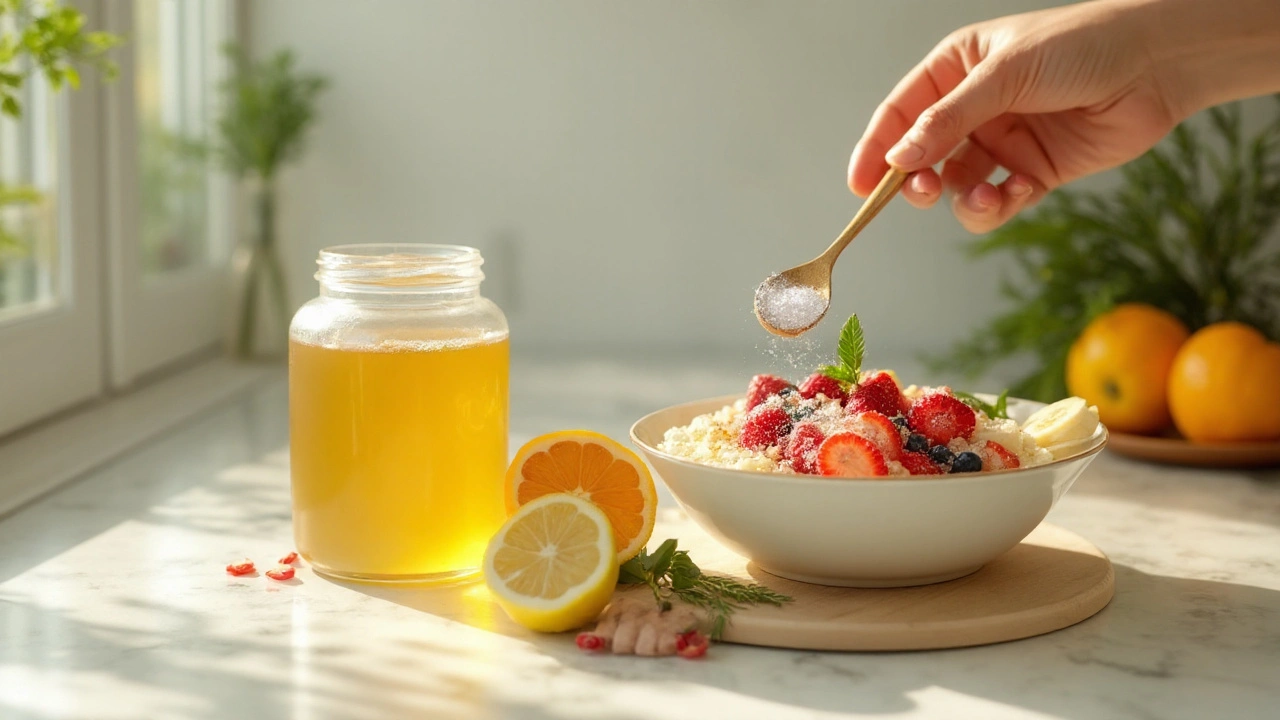Lauric acid is a medium‑chain fatty acid most people meet in coconut oil and palm kernel oil. It makes up about 45‑50% of coconut oil, which is why that oil feels so smooth and smells so tropical. Because it’s a saturated fat with a short chain length, the body digests it differently from the long‑chain fats found in butter or meat.
When you eat a spoonful of coconut oil, the lauric acid quickly turns into energy instead of storing as fat. That rapid conversion fuels your brain and muscles, which is why athletes sometimes add coconut oil to smoothies. But lauric acid isn’t just for sports – it also has antimicrobial properties that can help keep your skin and gut healthier.
First off, lauric acid can fight off harmful bacteria, viruses, and fungi. In the lab, it’s shown to break down the membranes of germs like Staphylococcus aureus and Candida albicans. When you use a coconut‑based soap or a lauric‑rich oil on your skin, you’re giving it a natural disinfectant boost.
Second, because the liver processes lauric acid faster, it may raise “good” HDL cholesterol more than other saturated fats. Some studies suggest that regular, moderate intake of coconut oil can improve the total cholesterol profile, though it shouldn’t replace prescription meds if you have heart disease.
Third, the quick energy supply can help kids who need extra calories without feeling sluggish. Mixing a teaspoon of coconut oil into oatmeal or a baby’s pureed veggies can add calories and a pleasant taste, but always check with a pediatrician first.
If you’re cooking, keep the temperature below 350°F (175°C). Lauric acid starts to break down at very high heat, producing unwanted compounds. For baking, stir a tablespoon of coconut oil into batter or dough – you’ll get a subtle nutty flavor and a softer crumb.
For skin care, start with a small patch test. Apply a dab of pure coconut oil to the inside of your wrist and wait 24 hours. If there’s no redness or itching, you can use it as a moisturizer, makeup remover, or after‑shave balm. People with very oily skin sometimes find coconut oil too heavy; in that case, look for a lauric‑acid‑rich serum that’s been formulated to be lighter.
When it comes to supplements, lauric acid is available in capsule form. The typical dose ranges from 500 mg to 1,000 mg per day. Don’t exceed 3 g without medical advice, as excess saturated fat can still raise overall calorie intake.
Finally, remember that not everyone reacts the same way. If you have a known coconut allergy, skip it entirely. Also, if you’re on cholesterol‑lowering medication, talk to your doctor before adding large amounts of coconut oil to your diet.
Bottom line: Lauric acid is a versatile, family‑friendly ingredient that can boost energy, support skin health, and even help keep certain germs at bay. Use it mindfully – keep cooking temps moderate, test skin reactions, and stay within recommended doses – and you’ll reap the benefits without the downsides.

Discover why lauric acid is touted as a miracle supplement, how it works, its health benefits, safe dosages, and how it compares to other MCTs in a clear, practical guide.
Read More© 2025. All rights reserved.